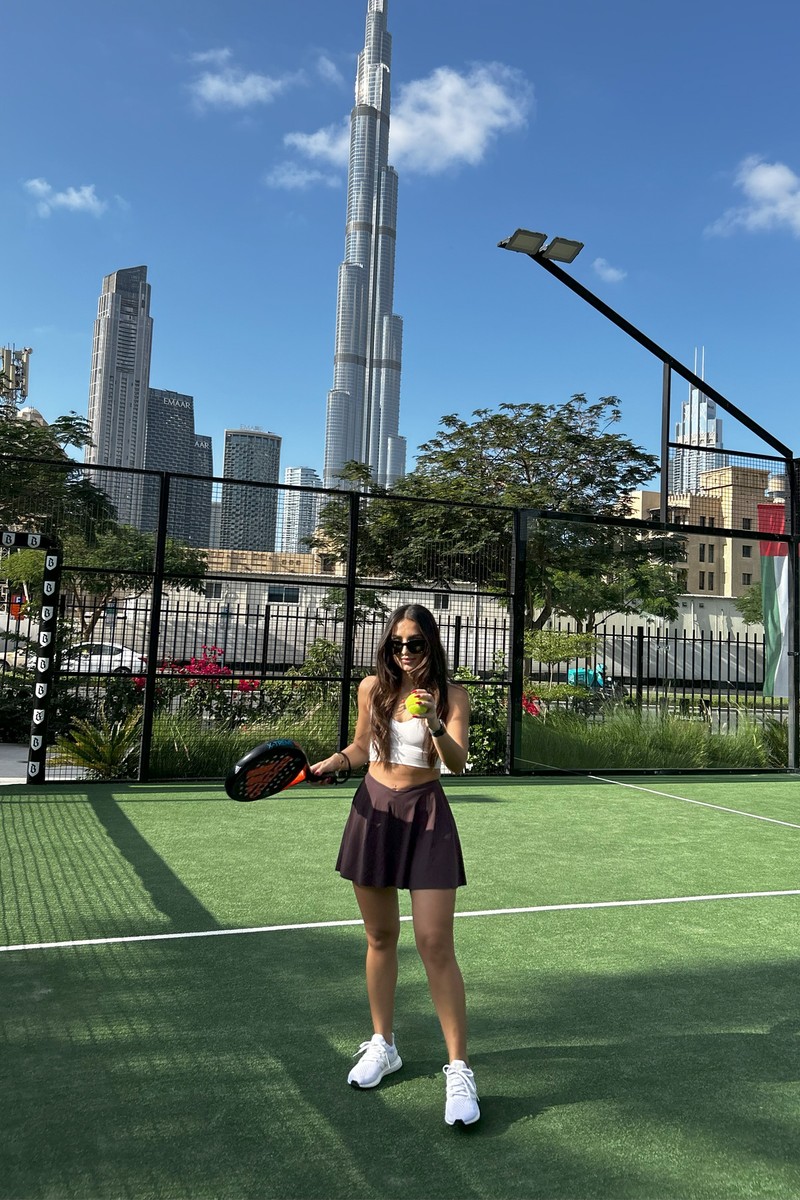14 Health & Fitness Rules From A Wellness Expert
My fitness journey has been a process of discovery. I wasn't introduced to sports at a young age, so finding activities I enjoyed took some time. Back then, I associated fitness with exhaustion – I didn't understand how it could transform my body and mind. Over time, my perspective has shifted. I moved away from the ‘all or nothing’ mentality and learned that the key to long-term success is finding workouts you genuinely enjoy and incorporating them into your daily routine. For example, playing padel once a week has become my cardio. It's challenging but fun, and that makes it sustainable. Now, I see fitness as a gateway to a healthier lifestyle, not just a means to an end.
Low-impact doesn't mean low-reward. Those workouts help you sculpt and tone muscles without all the pounding on your joints – think lean and strong, not bulky. Pilates and yoga help loosen you up, which can improve your range of motion and make you feel more limber for everyday activities. They also focus on the connection between your body and mind. Ever since I incorporated low-impact workouts into my routine, I learned how to breathe deeply, which lowered my stress and anxiety levels.
Nutrition is the silent partner in your fitness journey. It's like the fuel in your car – you can push yourself all you want in the gym, but without proper nutrition, you won't see results. For me, water is my BFF, no question. It keeps your body functioning smoothly, flushes out toxins, and makes your skin glow. Aim for eight glasses a day, minimum – bonus points if you ditch sugary drinks for H2O. Remember, it's not about depriving yourself – it's about making smart choices. There's still room for the occasional treat (balance, after all), but focus on fuelling your body with the good stuff to reach your fitness goals.
Gradually increasing weight, reps or sets to challenge your muscles is the key to pushing past that plateau. When you incorporate different exercises, you target different muscle groups. Keep trying new moves or modify the existing ones. It also helps if you plan your workouts in phases with specific goals, like building strength or improving endurance. I usually keep a tracking sheet or a training journal to stay motivated and measure my improvement.
Recovery days are a must. Intense workouts create microscopic tears in your muscle fibres. During recovery, your body repairs these tears, making the muscles stronger and more resilient. If you skip recovery, your progress stalls. What we also don’t consider is that overtraining is a recipe for disaster. The best way to recover is to make sure that I get seven or eight hours of sleep, incorporate active recovery workouts and eat nutritious food that’s rich in protein and complex carbs.
Invest in good equipment. I love the jump rope by BORK. It gets your heart rate up quickly and improves co-ordination. I also rate all the equipment from Bala. They’re sleek, stylish and effective. Another must-have is my Apple Watch. It helps me close my rings and stay motivated when I need to. I also like resistance bands because they're compact, portable and can be adjusted for various difficulty levels. Dumbbells allow you to work your upper and lower body with a wide range of exercises. But when I work out, I always try to incorporate some sort of bodyweight.
Don’t worry if you can’t touch your toes. Low-impact workouts – like Pilates and yoga – actually improve flexibility over time, regardless of gender or fitness level. Modifications can be made to accommodate all levels, allowing you to reap the benefits, even if you're not a natural bendy person. These workouts may not feel as high in intensity as a HIIT session, but they still burn calories. Plus, the focus on building lean muscle mass can help boost your metabolism, leading to increased calorie burn, even at rest. And let’s not forget the benefits of strength training, balance and co-ordination.
Consistency is important. Regular exercise, even if it's just for short periods, is more effective than sporadic intense workouts. I truly believe that if you make something part of your lifestyle, you can achieve long-term success. With my clients, I focus on building sustainable habits, not quick fixes. I encourage them to find foods and activities they enjoy to create a realistic lifestyle they maintain. Nutrition plays a crucial role. I educate clients about healthy eating habits and how to fuel their bodies for optimal performance and recovery. It’s always about progress and never perfection – a reminder that every workout and every healthy meal is a step in the right direction.
My weekly workout routine prioritises variety and recovery. I do strength training three days a week: day one is lower body, so squats, lunges and deadlifts. Day two is upper body, so push-ups, rows and push-presses. Day three is core and stability work, so usually Pilates. I follow up with two days of cardio; I like indoor cycling and lower-intensity cardio, like walking or padel. On recovery days, I always foam roll or self-massage, prioritising quality sleep and proper hydration. I’ve recently started incorporating ice baths into my recovery routine, too. This has helped a lot with breathing and mindset.
I prioritise getting my nutrients from whole foods. A balanced diet is the foundation for optimal health. However, I also believe in personalised supplementation based on your individual needs. Regular check-ups (every six months) are also crucial. This allows me to identify any potential nutritional deficiencies with my doctor. We can then discuss if targeted supplements might be beneficial. Ideally, a healthy diet provides all the minerals and vitamins you need, but sometimes you need a boost.
My pre-workout fuel depends on the intensity and timing of my workout. For intense workouts, I eat a small, easily digestible meal or snack one or two hours beforehand – something rich in complex carbohydrates and a moderate amount of protein. This provides sustained energy throughout the workout. For shorter or less intense workouts, a quick snack like fruit with nut butter or a protein shake might suffice. I also fuel differently if I’m doing morning workouts or afternoon or evening workouts. If I'm exercising first thing, I might opt for a banana with some peanut or almond butter or a smoothie with berries. This provides a quick energy boost and keeps me feeling full. If I'm working out later in the day, I might have a small meal like oatmeal with fruit and nuts, or whole-wheat toast with avocado and eggs. These provide a good balance of complex carbohydrates and protein for sustained energy.
Post-workout refuelling is equally important. A small snack rich in protein and carbohydrates is ideal. This could be a banana with almond butter, a protein shake with fruit, or some cottage cheese with berries. This helps initiate muscle repair and replenish glycogen stores.
Witnessing firsthand the impact of animal agriculture has shifted my perspective. My vegetarian/pescatarian journey began ten years ago while working on a farm in Australia. Over time, I naturally stopped consuming meat and found myself no longer craving it. This experience has transformed my relationship with food. It became less about taste and more about fuelling my body in a way that feels good.
I track my protein intake through plant-based sources and occasional seafood. It's been a journey of learning and experimentation, but it's definitely changed me for the better. While I'm unsure if I'll ever reintroduce meat, I remain open to my body's needs. Currently, I have no desire for it, and my focus is on getting the essential nutrients, including complete proteins, from plant-based sources. This means prioritising whole foods and avoiding processed options. Overall, this dietary shift has been a positive one, both physically and mentally. I feel great and am committed to nourishing my body.
Follow @Galawesh
DISCLAIMER: Features published by SheerLuxe are not intended to treat, diagnose, cure or prevent any disease. Always seek the advice of your GP or another qualified healthcare provider for any questions you have regarding a medical condition, and before undertaking any diet, exercise or other health-related programme.
DISCLAIMER: We endeavour to always credit the correct original source of every image we use. If you think a credit may be incorrect, please contact us at [email protected].









